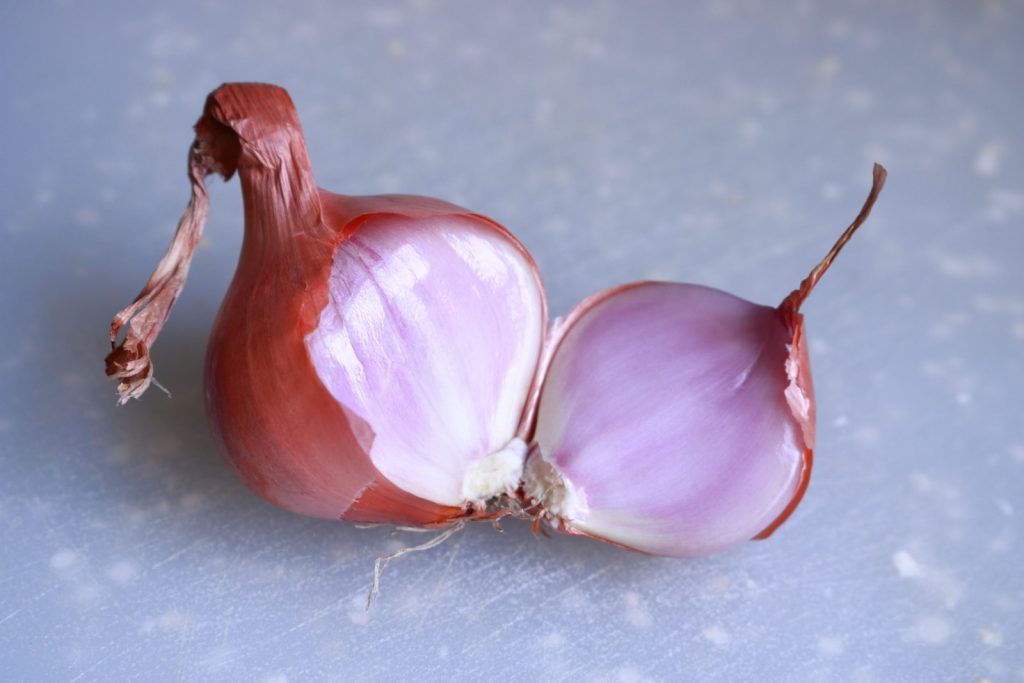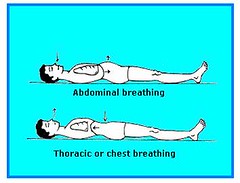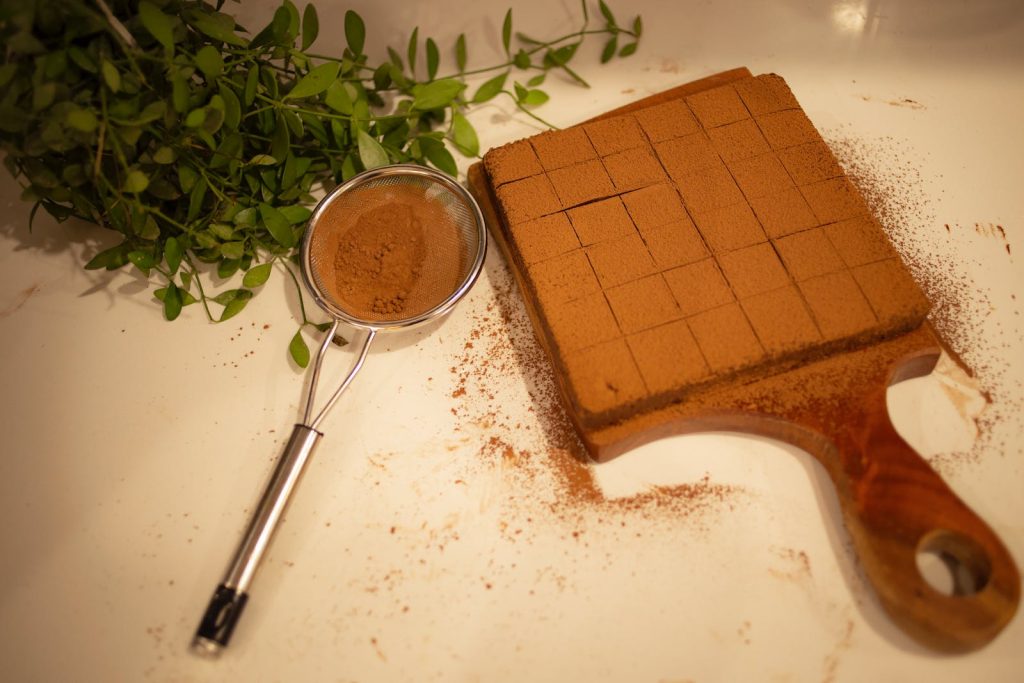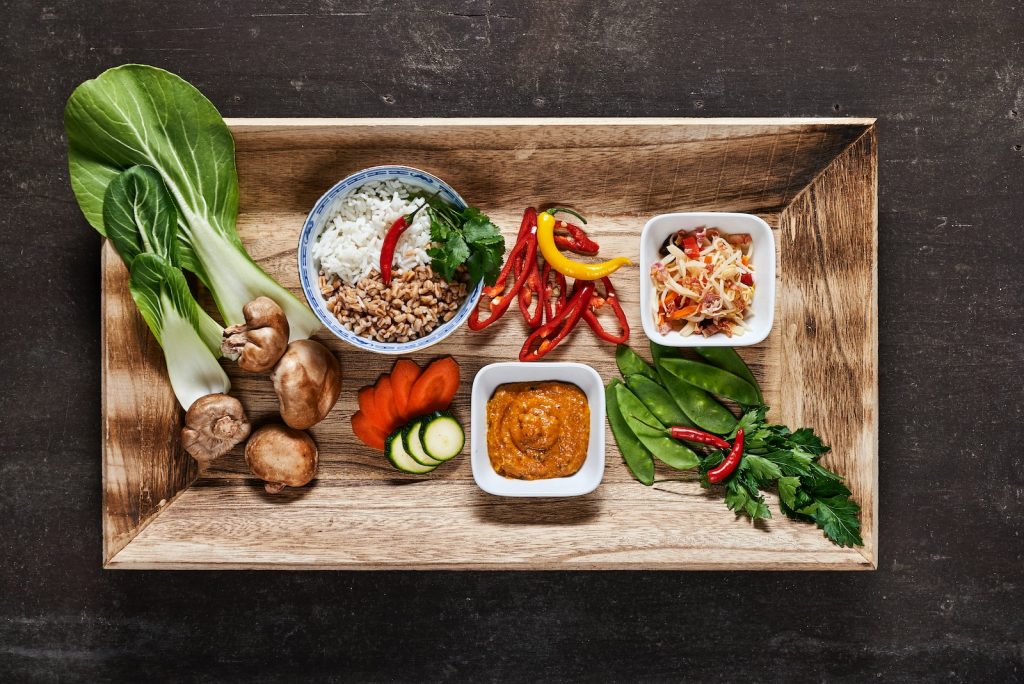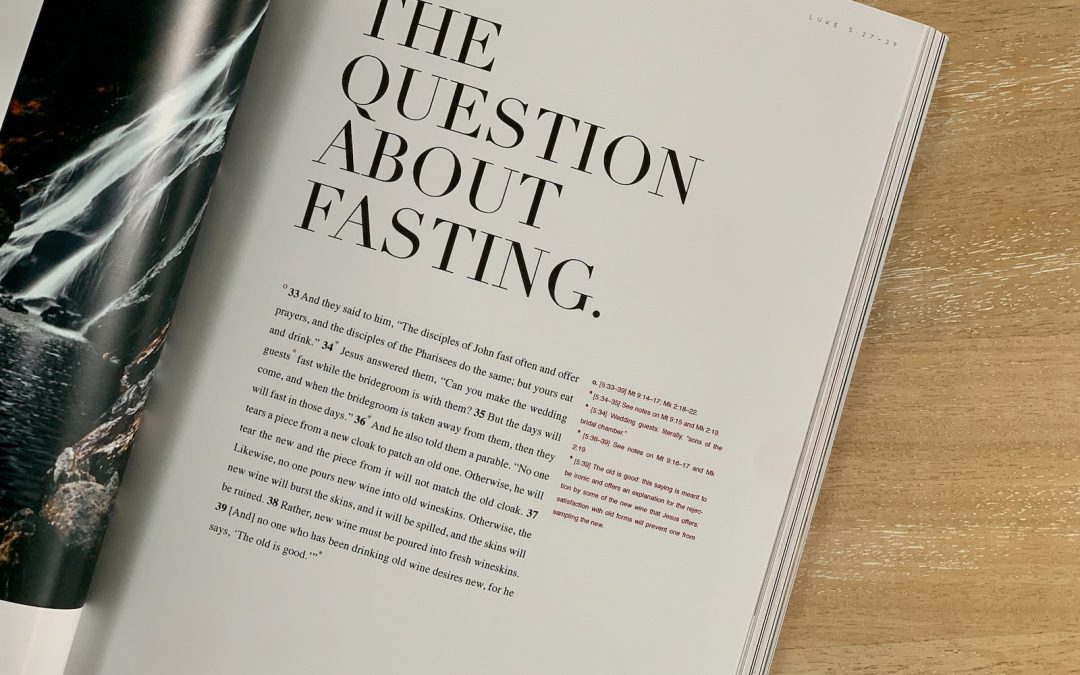
by Health And Healing AI | Nov 16, 2023 | Health, Nutrition
Beyond Flavor: The Remarkable Health Advantages of Onion Powder

The Hidden Gem in Your Spice Rack: Onion Powder’s Health Miracles. Photo by Amie Bell
Health Benefits of Onion Powder: If you’re looking for a versatile and flavorful seasoning to add to your meals, look no further than onion powder. Made from finely ground dehydrated onions, this spice is a staple in many kitchens and offers a range of health benefits.
Onion powder is a rich source of essential vitamins and minerals, including vitamins B and C, manganese, calcium, iron, and potassium. These nutrients contribute to a healthy immune system, improve digestion, and reduce inflammation.
Additionally, onion powder is low in calories, making it an excellent option for those watching their weight.
In addition to its health benefits, onion powder is also prized for its flavor and versatility.
It can be used to add depth and complexity to soups, stews, and sauces, and is also a popular seasoning for meat, poultry, and seafood. With its subtle sweetness and savory umami notes, onion powder is a must-have ingredient for any home cook looking to elevate their dishes.
Nutritional Profile
Onion powder is a low-calorie food that is rich in nutrients. A tablespoon of onion powder contains only eight calories, making it an excellent addition to a healthy diet. Onion powder is also low in fat, with less than 0.1 grams of fat per tablespoon.
Onion powder is a reliable source of dietary fiber, with 1.1 grams of fiber per tablespoon.
Fiber is essential for maintaining a healthy digestive system and can also help lower cholesterol levels.
Onion powder is also rich in vitamins and minerals. It contains vitamin C, which is an important antioxidant that helps protect cells from damage caused by free radicals.
Onion powder is also a useful source of vitamin B6, which is vital for maintaining brain function and producing red blood cells.
In addition, onion powder contains minerals such as iron, calcium, manganese, and potassium. Iron is essential to produce hemoglobin, which carries oxygen throughout the body.
Calcium is necessary for strong bones and teeth, while manganese is important for healthy brain function. Potassium is essential for maintaining healthy blood pressure levels and can also help reduce the risk of stroke.
Overall, onion powder is a nutritious food that can be easily incorporated into a healthy diet. Its low calorie and fat content, combined with its high fiber and nutrient content, make it an excellent choice for those looking to improve their overall health and well-being.
Antioxidant Properties
Onion powder is a rich source of antioxidants, which are essential for maintaining good health.
Antioxidants are compounds that help protect the body from free radicals, which are unstable molecules that can damage cells and contribute to the development of various diseases.
Onion powder contains several types of antioxidants, including flavonoids and anthocyanins.
These compounds have been shown to have powerful antioxidant properties, which can help reduce the risk of chronic diseases.
One of the key flavonoids found in onion powder is quercetin. Quercetin is a potent antioxidant that has been shown to have anti-inflammatory and anti-cancer properties.
It is also believed to help reduce the risk of heart disease by lowering blood pressure and reducing cholesterol levels.
Quercetin works by neutralizing free radicals, which can cause cell damage and contribute to the development of chronic diseases.
In addition to quercetin, onion powder also contains other flavonoids, such as kaempferol and myricetin. These compounds have been shown to have anti-inflammatory and anti-cancer properties, as well as antioxidant effects.
They work by scavenging for free radicals and preventing them from causing damage to cells.
Overall, the antioxidant properties of onion powder make it a valuable addition to any healthy diet. By consuming onion powder regularly, you can help protect your body from the damaging effects of free radicals and reduce your risk of chronic diseases.
Cardiovascular Benefits

The Flavorful Heart Protector: Onion Powder’s Cardiovascular Benefits. Photo by Jonathan Borba
Onion powder may have some cardiovascular benefits. The flavonoids in onions have been shown to help lower cholesterol levels.
Prominent levels of cholesterol can lead to the buildup of plaque in your arteries, which can increase your risk of heart disease. By helping to lower cholesterol levels, onion powder may help reduce your risk of heart disease.
In addition to helping lower cholesterol levels, onion powder may also help lower blood pressure. High blood pressure is another risk factor for heart disease. The sulfur compounds in onions may help relax the blood vessels, which can help lower blood pressure.
Furthermore, onion powder may help reduce the risk of blood clots. Blood clots can also increase your risk of heart disease. The sulfur compounds in onions may help prevent the formation of blood clots.
Overall, onion powder may have several cardiovascular benefits. By helping to lower cholesterol levels, lower blood pressure, and reduce the risk of blood clots, onion powder may help reduce your risk of heart disease.
Digestive Health Benefits
Onion powder contains fiber, which is essential for maintaining good digestive health. Fiber helps regulate bowel movements and prevents constipation. It also helps to reduce bloating and gas, which can be uncomfortable and embarrassing.
The prebiotic properties of onion powder also promote gut health.
Prebiotics are a type of dietary fiber that feeds the healthy bacteria in your gut, which then produces short-chain fatty acids (SCFAs). SCFAs are important for maintaining a healthy gut environment and can help reduce the risk of certain diseases.
Onion powder can also help with digestion. It contains enzymes that break down food and aid in the absorption of nutrients. This can help prevent indigestion and other digestive issues.
Overall, incorporating onion powder into your diet can have numerous benefits for your digestive health. It can help regulate bowel movements, reduce bloating and gas, promote gut health, and aid in digestion.
Anti-Inflammatory and Immune Boosting Benefits
Onion powder is known to have anti-inflammatory properties that can help reduce inflammation in the body. Inflammation is a natural response of the body’s immune system to injury or infection. However, chronic inflammation can lead to various diseases such as arthritis, heart disease, and cancer.
Onion powder contains compounds like quercetin and sulfur compounds that have been shown to have anti-inflammatory effects. These compounds can help reduce inflammation in the body and prevent the development of chronic diseases.
Moreover, onion powder has antibacterial properties that can help fight against bacterial infections. Onions contain allicin, a compound that has been shown to have antibacterial properties. Allicin can help fight against various bacterial strains, including E. coli and Salmonella.
Onion powder also has immune-boosting benefits. Onions are rich in vitamin C, which is essential for a healthy immune system. Vitamin C can help stimulate the production of white blood cells, which are responsible for fighting off infections and diseases.
In addition, onion powder has been shown to have anti-asthmatic properties that can help reduce the symptoms of asthma. Asthma is a chronic respiratory disease that affects millions of people worldwide. Onion powder can help reduce inflammation in the airways and improve breathing.
Overall, onion powder has various health benefits, including anti-inflammatory and immune-boosting properties. Incorporating onion powder into your diet can help reduce inflammation in the body, fight against bacterial infections, and improve your overall health.
Onion Powder and Blood Sugar

Onion Powder’s Role in Weight Management and Metabolism. Photo by Diabetesmagazijn.nl
If you are looking for a natural way to regulate your blood sugar levels, onion powder might be worth considering. Onions contain a compound called quercetin, which has been shown to have anti-diabetic properties.
According to a study published in the Journal of Medicinal Food, quercetin can help lower blood sugar levels in people with type 2 diabetes by inhibiting an enzyme that breaks down complex carbohydrates into simple sugars.
Onion powder is a convenient way to add quercetin to your diet. It is easy to use and can be added to a variety of dishes, including soups, stews, sauces, and marinades.
Additionally, onion powder has been shown to help regulate blood sugar levels, making it beneficial for those with diabetes or at risk for the condition.
One tablespoon of onion powder contains 4.7 grams of sugar and 1.9 grams of fiber. The fiber in onion powder helps slow down the absorption of sugar into the bloodstream, which can prevent spikes in blood sugar levels. Moreover, onion powder contains potassium, which is important for maintaining healthy blood pressure and heart function.
While onion powder can be a helpful addition to a diabetes-friendly diet, it is important to remember that it is not a substitute for medication or other treatments prescribed by your healthcare provider. If you have diabetes, be sure to talk to your doctor before making any changes to your diet or treatment plan.
In summary, onion powder may have anti-diabetic properties, thanks to its high quercetin content.
It may help regulate blood sugar levels and prevent spikes in blood sugar levels. However, more research is needed to determine the full extent of its benefits for people with diabetes.
Cancer Prevention Potential
Onion powder contains plant compounds that have been shown to have cancer-fighting properties.
One study conducted by Rui Hai Liu, an associate professor of food science from Cornell University, found that onions, particularly shallots, Western Yellow, pungent yellow, and Northern Red onions, are higher in anti-cancer chemicals than other varieties tested.
Furthermore, Liu found that shallots and Western Yellow and pungent yellow onion varieties are particularly effective in inhibiting the growth of liver and colon cancer cells.
Onions contain several compounds that have been shown to have anti-cancer properties.
One of these compounds is quercetin, a flavonoid that has been shown to have anti-inflammatory, antioxidant, and anti-cancer properties.
Quercetin has been shown to inhibit the growth of several types of cancer cells, including breast, colon, prostate, ovarian, and lung cancer cells.
Another compound found in onions that have been shown to have anti-cancer properties is sulfur compounds.
These compounds are responsible for the pungent smell and taste of onions and garlic.
Studies have shown that sulfur compounds can inhibit the growth of cancer cells and reduce the risk of several types of cancer, including stomach cancer and colorectal cancer.
In addition to these compounds, onions also contain elevated levels of antioxidants, which can help protect against cancer by neutralizing free radicals and preventing oxidative damage to cells.
Free radicals are unstable molecules that can damage cells and DNA, leading to cancer and other diseases.
Overall, including onion powder in your diet may help reduce your risk of developing cancer.
While more research is needed to fully understand the cancer-fighting properties of onion powder, the evidence so far suggests that it may be a valuable addition to a healthy diet.
Bone Health and Onion Powder

Combating Inflammation: Onion Powder’s Natural Anti-Inflammatory Properties. Photo by Ryan Baker
Including onion powder in your diet can contribute to strong and healthy bones. Onion powder contains essential minerals like calcium and magnesium, which are important for maintaining bone health and density.
Calcium is the main mineral found in bones, while magnesium is necessary for the absorption and metabolism of calcium.
Studies have shown that consuming onion powder can help improve bone density and reduce the risk of osteoporosis. Osteoporosis is a condition characterized by weak and brittle bones, which can lead to fractures and other complications.
In addition to calcium and magnesium, onion powder also contains other nutrients that are beneficial for bone health, including vitamin C and vitamin K.
Vitamin C is an antioxidant that can inhibit the DNA-damaging ability of free radical compounds and is important for collagen synthesis, which is a key component of bone tissue.
Vitamin K is essential for bone health as it helps to activate proteins that are involved in bone mineralization.
Onion powder can be easily incorporated into your diet by adding it to soups, stews, marinades, and dressings. It is also a great seasoning for roasted vegetables, meats, and potatoes.
Overall, including onion powder in your diet can provide various health benefits, including improving bone health, reducing inflammation, and improving digestion. So, next time you’re cooking, consider adding some onion powder to your dish for a flavorful and nutritious boost.
Cooking with Onion Powder
Onion powder is a versatile ingredient that can be used in a variety of cuisines and dishes. It is a terrific way to add flavor to your cooking without the hassle of chopping fresh onions. Here are some ways to use onion powder in your cooking:
Substituting for Fresh Onions
If you don’t have fresh onions on hand, you can easily substitute onion powder. One tablespoon of onion powder is equivalent to one medium onion. This is especially useful if you don’t like the texture of raw onions in your dishes.
Adding to Soups and Stews
Onion powder is a great addition to soups and stews. It adds a depth of flavor that can’t be achieved with fresh onions alone. Try adding it to your favorite vegetable soup or beef stew recipe.
Using in Sauces
Onion powder can be used in sauces to add flavor without adding extra liquid. It works well in cream-based sauces like alfredo or in tomato-based sauces like marinara.
Baking with Onion Powder
Onion powder can be used in baking to add flavor to savory dishes like breads and crackers. It pairs well with garlic powder and other herbs like rosemary and thyme.
Dehydrating Onion Powder
If you have an abundance of fresh onions, you can dehydrate them and make your own onion powder. Simply slice the onions thinly and place them in a dehydrator or oven set to a low temperature. Once they are completely dry, grind them into a powder using a spice grinder or mortar and pestle.
Pairing with Other Alliums
Onion powder can be used in conjunction with other alliums like garlic, shallots, leeks, and chives. It adds a subtle onion flavor without overpowering the dish. Try using it in garlic and onion roasted chicken or in a shallot and onion quiche.
Overall, onion powder is a great ingredient to have in your pantry. It can be used in a variety of dishes and cuisines and adds a depth of flavor that can’t be achieved with fresh onions alone.
Conclusion
In conclusion, onion powder is a versatile and nutritious ingredient that can provide various health benefits. It is an excellent source of essential vitamins and minerals, including vitamins B and C, manganese, calcium, iron, and potassium. Onion powder is also rich in antioxidants, which can help protect your body from harmful free radicals.
Including onion powder in your diet can help improve your immune system, aid in digestion, and reduce inflammation. It is also low in calories, making it a great option for those watching their weight. Additionally, onion powder has been shown to have potential benefits in regulating blood pressure and reducing bloating.
While onion powder can be a fantastic addition to your meals, it is important to note that it should not be used as a replacement for fresh onions. Fresh onions provide additional health benefits and nutrients that are not present in onion powder. So, make sure to incorporate both fresh onions and onion powder into your diet to reap the full benefits.

by Health And Healing AI | Nov 15, 2023 | Health, Mindfulness
Elevate Your Life: Embrace the Magic of 11th-Step Meditation.
The Power of 11th-Step Meditation: Picture this: It’s a deadline looming like ominous clouds on the horizon, with life’s demands pulling you in every direction.
The city outside your window is a blur of motion and noise, a concrete jungle in perpetual chaos. Amid this whirlwind, I stumbled upon a hidden oasis of serenity – the 11th-step Meditation.
Close your eyes briefly and imagine stepping into a quiet room bathed in soft, golden light.
The walls seem to breathe calmly, and a gentle breeze carries the soothing scent of lavender. A plush cushion beckons in the corner, inviting you to leave your worries behind and sit.
As you settle in, the outside world’s noise fades away, replaced by a gentle hum of serenity. It is where the journey begins.
Today, I will unveil how this simple, yet profound meditation technique can become your anchor amidst life’s storms.
In the stillness, you find your breath slow and steady like the rhythmic waves of a tranquil sea. The chaos that once engulfed you becomes distant, almost like a dream.
The cluttered thoughts in your mind start to organize themselves like stars forming constellations in the night sky.
Now, imagine the profound impact this practice can have on your life. From finding calm amidst chaos to forging a deeper spiritual connection, the 11th-step meditation holds the key.
It’s a cinematic journey, with each meditation session revealing a new scene of your life’s story, where serenity is not a distant dream but a tangible reality.

Elevate Your Spirituality: A Journey Through 11th-Step Meditation
Are you ready to unlock the door to inner Peace and clarity?
Join me as we dive deeper into this world, where each meditation session is a new chapter in your life’s movie, where you are the star and director of your peaceful narrative.
Get ready to embark on a journey that promises not just serenity but a profound shift in your life, like a masterpiece unfolding on the big screen of your soul.
The 11th Step of Alcoholics Anonymous (AA) involves seeking conscious contact with a higher power through prayer and Meditation.
This Step is crucial in maintaining sobriety and spiritual growth. Many AA members use Meditation to connect with their higher power and gain clarity and Peace of mind.
AA 11th-step meditation can take many forms, such as guided, silent, or prayer.
This practice aims to improve one’s conscious contact with their higher power and gain the knowledge and power to carry out their higher power’s will.
Meditation can also help individuals better understand themselves and their place in the world.
AA 11th-step meditation can be a powerful tool for managing stress, anxiety, and other negative emotions for those in recovery.
By cultivating regular Meditation, individuals can learn to cope better with demanding situations and gain a sense of inner Peace.
Overall, AA 11th-step meditation is an essential component of the AA program and can be a valuable tool for anyone seeking spiritual growth and sobriety.
Understanding the 11th-Step

Unlock Your Mind’s Serene Vault: 11th-Step Meditation Unveiled.
Secrets of Serenity: Unveiling the 11th-Step Meditation
The 11th Step of Alcoholics Anonymous (AA) involves seeking a deeper connection with a higher power through prayer and Meditation.
It is an essential part of the recovery process for many individuals who follow the AA program. As someone who has benefited from this Step, I can attest to its power in helping me maintain sobriety.
The 11th Step is often called the “maintenance step” because it helps individuals stay grounded in their recovery.
It involves seeking conscious contact with a higher power, which can be interpreted in various ways depending on an individual’s beliefs.
It means connecting with a power greater than myself that helps guide me daily.
Prayer and Meditation are the primary means of achieving this conscious contact. Through prayer,
I ask my higher power for guidance and strength to stay sober.
Meditation allows me to quiet my mind and listen for any messages or insights that my higher power may be trying to communicate to me.
It’s important to note that the 11th Step is not about asking for specific outcomes or material possessions.
Instead, it’s about seeking knowledge of my higher power’s will for me and the power to carry it out. It means trusting that my higher power has a plan for me and that I can carry it out with their guidance.
In conclusion, the 11th Step of AA is a powerful tool for maintaining sobriety and seeking a deeper connection with a higher power.
Through prayer and Meditation, individuals can achieve conscious contact with their higher power and gain guidance and strength to stay sober.
The Role of Meditation in the 11th Step
Reflecting on my experience with the 11th Step of Alcoholics Anonymous, I am reminded of Meditation’s important role in this Step.
According to the AA literature, the 11th Step involves seeking through prayer and Meditation to improve our conscious contact with a higher power, as we understand it, praying only for knowledge of their will for us and the power to carry that out.
Meditation is a powerful tool that can help us achieve this goal.
By quieting our minds and focusing our attention, we can become more receptive to the guidance of our higher power.
Regular practice connects us more deeply with our spiritual selves and the world.
Many different types of Meditation can be used in the 11th Step. Some people prefer guided meditations, which provide a structured framework for their practice.
Others prefer to use more traditional forms of Meditation, such as mindfulness or loving-kindness meditation.
Regardless of the technique, the key is approaching Meditation with an open mind and a willingness to learn.
It may take time to develop a regular practice, but the benefits of doing so can be profound.
In my own experience, Meditation has helped me to cultivate a sense of inner Peace and serenity that I never thought possible.
By quieting my mind and connecting with my higher power, I have gained a deeper understanding of myself and my place in the world.
I encourage anyone interested in the 11th Step to explore Meditation’s role in their spiritual journey.
Practical Techniques for 11th-Step Meditation
As I have practiced the 11th Step Meditation, I have found that a few techniques have benefited me. In this section, I will share two techniques: Breathing Techniques and Mindfulness Practices.

Unlock the secrets to a harmonious existence through Meditation. agmatic-Breathing-Exercises-Technique
Breathing Techniques
Breathing techniques can be a helpful way to calm the mind and body and focus during Meditation.
One technique that I have found particularly helpful is the 4-7-8 breathing technique.
To practice this technique, I inhale for a count of four, hold my breath for seven, and exhale for eight. I repeat this cycle for several minutes, focusing on the breath and counting each inhale and exhale.
Another technique that can be helpful is the use of a mantra or phrase to focus the mind during Meditation.
For example, I might repeat the phrase “I am at peace” with each inhale and exhale, or I might focus on the word “serenity” or “love.”
The key is to choose a phrase or word that resonates with you and to repeat it consistently throughout the Meditation.
Mindfulness Practices
Mindfulness practices can also be helpful during the 11th Step of Meditation. One practice that I have found particularly useful is body scan meditation.
During this practice, I focus on each body part, starting with my toes and working to the top of my head.
I pay attention to any sensations or feelings in each body part without judgment or analysis.
This practice can help me to become more aware of my body and to release tension or discomfort.
Another mindfulness practice that can be helpful is the use of visualization.
For example, I might visualize a peaceful scene, such as a beach or a forest, and imagine myself walking through that scene.
I might focus on the scene’s sights, sounds, and smells and fully immerse myself in the experience. This practice can help promote relaxation and reduce stress.
In conclusion, many techniques can be helpful during the 11th Step Meditation.
Experiment with different techniques and find the ones that work best for you.
Remember that the goal of Meditation is not to achieve perfection or to eliminate all thoughts but rather to cultivate a sense of Peace and connection with a higher power.
Benefits of 11th-Step Meditation

The 11th-Step Meditation Blueprint: Your Path to Peace and Clarity.
As someone who practices the 11th Step Meditation, I have experienced numerous benefits that have improved my physical, emotional, and mental well-being.
Here are some of the benefits of 11th Step Meditation that I have personally experienced:
H3 Improved Focus and Concentration
11th Step Meditation involves focusing on a specific object or thought, which helps to improve focus and concentration. With regular practice, I have noticed that I can concentrate better on my work, studies, and daily tasks.
Reduced Stress and Anxiety
Meditation is known to reduce stress and anxiety levels.
By practicing 11th Step Meditation, I have learned to be more mindful and present, which has helped me manage my stress and anxiety levels better.
Increased Self-Awareness
11th Step Meditation involves becoming more aware of your thoughts, emotions, and physical sensations. It has helped me become more self-aware and better understand my thought patterns and behaviors.
Improved Sleep
Meditation can help to improve the quality of sleep. By practicing 11th Step Meditation before bedtime, I have noticed that I can fall asleep faster and sleep more soundly throughout the night.
Increased Compassion and Empathy
11th Step Meditation involves cultivating compassion and empathy towards oneself and others.
With regular practice, I have noticed that I am more patient and understanding toward others, and I can approach situations with a more compassionate and empathetic mindset.
11th Step Meditation has numerous benefits that can improve one’s physical, emotional, and mental well-being.
By incorporating regular meditation practice into my daily routine, I have experienced these benefits firsthand and would highly recommend them to others.
Challenges in 11th-Step Meditation

The Silent Sanctuary Within Exploring 11th-Step Meditation.
As with any practice, there are challenges that one may encounter when trying to incorporate 11th-step meditation into their daily routine. In this section, I will discuss some common obstacles and how to overcome them.
Common Obstacles
Busy Schedule
A busy schedule is one of the most common obstacles in establishing a consistent 11th-step meditation practice.
Many people struggle to be available for Meditation in their daily routines. However, it is essential to remember that even a short meditation session can be beneficial.
Start with a few minutes daily and gradually increase the time as you become more comfortable with the practice.
Restlessness
Another challenge that many people face is restlessness during Meditation.
It is expected to experience a wandering mind or physical discomfort while sitting in stillness.
However, it is essential to remember that this is a normal part of the meditation process.
Instead of getting frustrated, observe these thoughts and sensations without judgment and gently bring your focus back to your breath.
Doubt
Doubt is another common obstacle that can arise during Meditation.
Many people may question whether they are doing it right or if it is even working. It is important to remember that there is no right or wrong way to meditate and that the benefits may not be immediately apparent.
Trust in the process and continue to practice consistently.
Overcoming Challenges
Accountability
One way to overcome these challenges is to establish accountability. Find a meditation partner or group that can help keep you motivated and on track.
It can also provide an opportunity for discussion and support.
Guided Meditations
Guided meditation can also be a helpful tool in overcoming challenges.
Many resources, including apps, websites, and podcasts, offer guided meditations for beginners.
These can provide structure and guidance for those new to Meditation or struggling with consistency.
Mindfulness Practices
Incorporating mindfulness practices into your daily routine can also help overcome challenges in Meditation.
It can include mindful breathing exercises, movement, or being present and aware in everyday activities.
In conclusion, while there may be challenges in establishing an 11th-step meditation practice, there are also many ways to overcome them.
By being consistent, patient, and open-minded, anyone can reap the benefits of this powerful practice.
Case Studies of Successful 11th-Step Meditation
I have encountered many case studies of individuals who have successfully incorporated the 11th Step Meditation into their daily routines.
Here are a few examples:
Case Study 1: John
John, a recovering alcoholic, struggled to maintain sobriety for several years.
He had tried various methods, including therapy and medication, but nothing seemed to work.
It wasn’t until he discovered the 11th Step Meditation that he could find inner Peace and maintain his sobriety.
John started practicing the 11th Step Meditation every morning before starting his day.
He would sit quietly and focus on his breath, repeating a mantra to himself.
The practice helped him stay centered and focused throughout the day, and he found that he could handle stressful situations without turning to alcohol.
Case Study 2: Sarah
Sarah had been sobering for several years when she discovered the 11th Step Meditation. She had always struggled with anxiety and depression, and Meditation helped her manage her symptoms.
Sarah would practice the 11th Step Meditation every evening before bed.
She found that it helped her to relax and let go of any negative thoughts or emotions from the day. She also noticed that she slept better and woke up refreshed in the morning.
Case Study 3: Tom
Tom had been a member of AA for several years but had always struggled with the spiritual aspect of the program.
He had difficulty connecting with a higher power and felt he was missing a critical program component.
When Tom discovered the 11th Step Meditation, it helped him deepen his spiritual practice. He would practice Meditation every morning and evening and found that it helped him connect with his higher power in a way he never had before.
Overall, these case studies demonstrate the power of the 11th Step Meditation in helping individuals maintain their sobriety and deepen their spiritual practice.
While the practice may not work for everyone, it is worth exploring for those looking to improve their conscious contact with a higher power.
Conclusion
In conclusion, the 11th Step of AA is an essential part of recovery for those in the program.
By seeking conscious contact with a higher power through prayer and Meditation, individuals can find the strength and guidance necessary to maintain sobriety and live a fulfilling life.
Through the practice of Step 11, individuals can develop a deeper understanding of their spirituality and connection to a higher power.
It can provide a sense of Peace and purpose essential for maintaining sobriety and living a fulfilling life.
It’s important to note that the 11th Step is not a one-time practice but a daily commitment to seeking conscious contact with a higher power.
By incorporating prayer and Meditation into their daily routine, individuals can continue to strengthen their connection to a higher power and find the guidance and strength necessary to maintain sobriety.
Overall, the 11th Step is an essential part of the AA program and can provide individuals with the tools necessary to live a fulfilling life in sobriety.
By embracing the practice of prayer and Meditation, individuals can find the Peace, purpose, and strength necessary to overcome the challenges of addiction and live a life free from alcoholism.

by Health And Healing AI | Nov 13, 2023 | Health
The Unexpected Hero of Breakfast Tables
A Morning Revolution in A Mug
In dawn’s soft, amber glow, my kitchen transformed into a stage. The coffee pot, a humble vessel, held center stage, its steam curling like whispers of a hidden tale.
Today, it promised something more than its routine brew. Guided by a spark of creativity, my hands reached for ingredients not usually paired with coffee.
Cinnamon sticks, a dash of nutmeg, and a hint of vanilla – each addition a character in this unfolding drama.
The aroma that filled the room was like a symphony, each note playing its harmonious part. It wasn’t just a cup of coffee but an experience, a journey of flavors.
As the first sip crossed my lips, the world outside paused. The blend of rich coffee with unexpected spices created a tapestry of taste, a fusion of tradition and innovation.
I stood there, savoring the warmth, the depth, the dance of flavors on my tongue. It was a revelation, a morning ritual to be reborn.

The Sunrise Surprise: How to Spice Up Your Morning Cup of Joe. Photo by P.O.sitive Negative
I invite you to join me in this sensory adventure. Let me guide you through a transformation that elevates the ordinary to the extraordinary.
Together, we’ll turn your morning cup into a canvas, painting each day with vibrant flavors and textures.
Embrace this culinary voyage and let your breakfast table become a haven of gourmet delight.
How to Brew a Cup of Coffee with Chocolate Powder
Unveiling the Unexpected: Morning Coffee Gets a Delectable Twist
If you’re a coffee lover looking to switch things up a bit, why not try brewing your coffee with chocolate powder?
This delicious combination is a terrific way to add a touch of sweetness and indulgence to your morning cup of joe.
Plus, it’s a simple and effortless way to make your coffee taste like a gourmet treat without having to leave your house.
Brewing coffee with chocolate powder is a great option for those who love the taste of chocolate but don’t necessarily want to indulge in a full-blown mocha.
It’s a subtle way to infuse your coffee with a hint of chocolatey goodness that can be enjoyed any time of day.
Plus, it’s a fantastic way to experiment with assorted flavors and textures to find the perfect balance for your taste buds.
To get started, all you need is your favorite coffee beans, hot water, and some high-quality chocolate powder.
Simply brew your coffee as you normally would, then add a spoonful or two of chocolate powder to your cup and stir until well combined.
You can also experiment with adding other flavors like cinnamon or vanilla extract for an extra boost of flavor.
So go ahead and try it – you might just discover your new favorite way to enjoy your coffee.
Understanding Coffee and Chocolate
The Ultimate Coffee Hack: Elevate Your Mornings with This Twist
If you are a coffee lover and a chocolate enthusiast, you might have wondered how to combine both flavors in your favorite drink.
Brewing coffee with chocolate powder is a simple and delicious way to enjoy the best of both worlds.
When it comes to coffee, there are several types of beans, roasts, and brewing methods. The same goes for chocolate, which can be made from several types of cacao beans and processed in many ways.
Therefore, the taste and aroma of your coffee and chocolate powder will depend on several factors, such as the origin, quality, and preparation method.
Coffee is known for its caffeine content, which can provide a boost of energy and alertness. However, caffeine is not the only compound that gives coffee its unique flavor and aroma.
Coffee also contains acids, oils, and other chemicals that contribute to its taste profile. Similarly, chocolate contains caffeine, theobromine, and other compounds that affect its flavor and texture.
When you brew coffee with chocolate powder, you can enhance the flavor and aroma of both ingredients.
Chocolate powder can add a rich, sweet, and creamy taste to your coffee, while coffee can balance the sweetness and add a subtle bitterness.
Depending on the amount and type of chocolate powder you use, you can create different variations of this drink, from a light and sweet mocha to a dark and intense chocolate coffee.
To brew coffee with chocolate powder, you can use a French press, drip brewer, or any other method you prefer.
Simply add the desired amount of chocolate powder to your coffee grounds before brewing or mix it with hot water or milk and pour it over your coffee.
You can also add other ingredients, such as cinnamon, vanilla extract, or whipped cream, to customize your drink.
Overall, brewing coffee with chocolate powder is a fun and effortless way to experiment with assorted flavors and create your own unique blends. Whether you prefer a strong and bold coffee or a sweet and creamy chocolate drink, you can find the perfect balance by adjusting the amount and type of ingredients you use.
Choosing Quality Ingredients

Start Your Day Right: The Unconventional Twist for Your Morning Coffee. Photo by HONG SON
When it comes to brewing coffee with chocolate powder, choosing quality ingredients is key to achieving the best flavor. Here are some tips to help you choose the best ingredients for your coffee:
Chocolate Powder
When choosing chocolate powder, opt for high-quality cocoa powder that is unsweetened. Look for cocoa powder that is labeled as “natural” or “Dutch,” which means it has been processed with alkali to reduce acidity and bitterness.
Natural cocoa powder has a fruitier and more acidic flavor, while Dutch cocoa powder has a smoother, more mellow flavor.
Coffee Beans
For the best flavor, choose high-quality coffee beans that are freshly roasted. Look for beans that are labeled as “single origin” or “specialty grade.”
Single-origin beans come from a specific region and have a unique flavor profile, while specialty-grade beans are carefully selected and roasted to bring out the best flavor.
Milk
When it comes to adding milk to your coffee, choose whole milk for a creamier texture and richer flavor.
If you prefer a dairy-free option, try using almond milk or oat milk, which both have a creamy texture and nutty flavor that pairs well with chocolate.
Sweeteners
If you prefer your coffee sweetened, avoid using artificial sweeteners and opt for natural sweeteners like honey, maple syrup, or coconut sugar.
These sweeteners add a depth of flavor that complements the chocolate and coffee.
However, be mindful of how much sweetener you add, as too much can overpower the flavor of the coffee and chocolate.
By choosing quality ingredients, you can elevate the flavor of your coffee and enjoy a delicious and indulgent treat.
Properly Storing Coffee and Chocolate Powder

Sip with Surprise: Your Morning Cup of Joe Just Got Even Better. Photo by Mike Kenneally
Morning Ritual Upgrade: Discover the Secret Behind the Twist
When it comes to brewing coffee with chocolate powder, the quality of your ingredients can make all the difference. Safely storing your coffee and chocolate powder can ensure that they stay fresh and flavorful for longer.
Here are some tips on how to store your coffee and chocolate powder properly.
Storing Coffee
Coffee beans are sensitive to air, moisture, heat, and light. Exposure to any of these elements can cause the coffee beans to lose their flavor and aroma.
Here are some tips on how to store your coffee beans:
- Store your coffee beans in an airtight container. This will prevent air from getting in and keep your coffee beans fresh.
- Keep your coffee beans away from moisture and heat. Do not store your coffee beans in the refrigerator or freezer, as this can cause moisture to build up and damage the beans.
- Store your coffee beans in a cool, dark place. Direct sunlight can cause the oils in the coffee beans to go rancid and spoil the flavor of your coffee.
Storing Chocolate Powder
Chocolate powder, like coffee beans, is also sensitive to air, moisture, heat, and light. Improper storage can cause the chocolate powder to clump together and lose its flavor.
Here are some tips on how to store your chocolate powder:
- Store your chocolate powder in an airtight container. This will prevent air from getting in and keep your chocolate powder fresh.
- Keep your chocolate powder away from moisture and heat. Do not store your chocolate powder in the refrigerator or freezer, as this can cause moisture to build up and damage the powder.
- Store your chocolate powder in a cool, dry place. Direct sunlight can cause the chocolate powder to melt and spoil the flavor.
By following these simple storage tips, you can ensure that your coffee and chocolate powder stay fresh and flavorful for longer.
Preparing Your Coffee Maker
Embrace the Delicious Coffee Twist

Caffeine with a Twist: Start Your Day the Extraordinary Way. Photo by Milada Vigerova
Before you start brewing coffee with chocolate powder, you need to make sure your coffee maker is clean and ready to use. Here are a few steps to prepare your coffee maker:
- Clean your coffee maker: Make sure your coffee maker is clean and free of any old coffee grounds or residue. If it’s been a while since you last cleaned your coffee maker, run a cleaning cycle with a mixture of water and vinegar to remove any buildup.
- Choose your coffee: Select your favorite coffee blend that will complement the chocolate flavor. A medium roast coffee is usually a desirable choice as it has a balanced flavor that won’t overpower the chocolate.
- Add chocolate powder: Measure out the amount of chocolate powder you want to use in your coffee. A good rule of thumb is to use 1-2 tablespoons of chocolate powder per cup of coffee, depending on how strong you want the chocolate flavor to be.
- Mix the chocolate powder with coffee: Mix the chocolate powder with the coffee grounds before brewing. This will ensure that the chocolate flavor is evenly distributed throughout the coffee.
- Brew your coffee: Brew your coffee as you normally would. If you’re using a drip coffee maker, make sure to follow the manufacturer’s instructions. If you’re using a French press, add the chocolate coffee mixture to the press, pour hot water over it, and let it steep for a few minutes before pressing down the plunger.
By following these simple steps, you can prepare your coffee maker for brewing delicious coffee with chocolate powder.
Brewing Process
Brewing coffee with chocolate powder is a delicious way to add some sweetness and depth to your morning cup of joe. Here are the steps to follow:
Mixing Coffee and Chocolate Powder
- Start by brewing your coffee as you normally would. You can use any brewing method you prefer, such as drip, French press, or pour-over.
- While the coffee is brewing, measure out the amount of chocolate powder you want to use. A good rule of thumb is to use about 1 tablespoon of chocolate powder for every 6 ounces of coffee.
- Once the coffee is finished brewing, pour it into a mug or carafe.
- Add the chocolate powder to the coffee and stir well until the powder is completely dissolved.
Brewing the Mixture
- If you’re using a drip coffee maker, you can simply add the chocolate powder to the coffee grounds before brewing. This will ensure that the chocolate is evenly distributed throughout the coffee.
- If you’re using a French press or pour-over method, you can add the chocolate powder to the coffee after it’s brewed. Simply pour the coffee into a separate container, add the chocolate powder, and stir well.
- If you want to get really fancy, you can even froth some milk and add it to the coffee and chocolate mixture for a delicious latte-like drink.
That’s it! Brewing coffee with chocolate powder is a simple and easy way to add some extra flavor to your morning routine. Give it a try and see how you like it.
Serving Suggestions
Now that you’ve brewed your delicious coffee with chocolate powder, it’s time to serve it up! Here are some serving suggestions to make your coffee even more enjoyable:
- Add a dollop of whipped cream on top of your coffee for an extra creamy and decadent treat.
- Sprinkle some chocolate shavings or cocoa powder on top of your whipped cream for an extra chocolatey kick.
- Serve your coffee with a side of chocolate-covered espresso beans for a fun and flavorful snack.
- Add a splash of your favorite flavored syrup, such as vanilla or caramel, to your coffee for a personalized touch.
- For an iced coffee version, pour your brewed coffee over ice and add a splash of milk or cream for a refreshing drink on a muggy day.
Remember, the serving suggestions are just suggestions! Feel free to get creative and experiment with different toppings and flavors to find your perfect cup of coffee with chocolate powder.
Cleaning and Maintenance
To ensure that your coffee maker remains in good condition and produces great-tasting coffee every time, it’s important to clean and maintain it regularly. Here are some tips to help you keep your coffee maker clean and functioning properly:
- Clean the carafe and filter basket after each use. Rinse them with warm, soapy water and dry them thoroughly. If the carafe has stains or residue that won’t come off with regular washing, try using a mixture of hot water and baking soda to scrub it clean.
- Describe your coffee maker regularly. Over time, mineral deposits from water can build up inside your coffee maker and affect the taste of your coffee. To describe your coffee maker, mix equal parts water, and white vinegar, and run it through the machine. Follow up with two cycles of plain water to rinse out any remaining vinegar.
- Clean the brew basket and water reservoir. If you use a drip coffee maker, you might rinse the brew basket at the sink after you empty it. Now and then, it’s good to go the extra mile and clean the brew basket and/or water reservoir with warm, soapy water to remove any buildup or residue.
- Replace the filter regularly. If your coffee maker uses a paper filter, be sure to replace it after each use. If your coffee maker has a permanent filter, clean it after each use and replace it every few months.
- Store your coffee maker properly. When not in use, store your coffee maker in a clean, dry place. Avoid leaving water or coffee grounds in the machine, as this can lead to mold growth or other issues.
By following these simple tips, you can keep your coffee maker clean and functioning properly, ensuring that you always have a delicious cup of coffee to enjoy.
Common Mistakes to Avoid
Brewing coffee with chocolate powder is a wonderful way to add a twist to your daily coffee routine. However, there are some common mistakes that you should avoid ensuring that your coffee tastes great every time.
Using Low-Quality Coffee
One of the most common mistakes when brewing coffee with chocolate powder is using low-quality coffee. No matter how much chocolate powder you add, if the coffee itself is not of excellent quality, the result will not be satisfying. Make sure to use freshly roasted, high-quality coffee beans for the best taste.
Using Too Much Chocolate Powder
Adding too much chocolate powder can overpower the taste of the coffee and make it too sweet. It is recommended to use 1-2 tablespoons of chocolate powder per cup of coffee. You can adjust the amount based on your personal preference but be careful not to add too much.
Not Mixing the Chocolate Powder Properly
When adding chocolate powder to your coffee, it is important to mix it properly. If you don’t mix it well, the powder can clump together and create a gritty texture in your coffee.
To avoid this, mix the powder with a small amount of hot water or milk first, and then add it to your coffee.
Using the Wrong Temperature Water
Using water that is too hot can burn the coffee and chocolate powder, resulting in a bitter taste.
On the other hand, using water that is not hot enough can result in a weak and flavorless coffee.
The ideal water temperature for brewing coffee is between 195-205°F (90-96°C).
Not Cleaning the Equipment
Lastly, not cleaning your coffee equipment can lead to a buildup of coffee oils and residue, which can affect the taste of your coffee.
Make sure to clean your coffee maker or French press regularly to ensure that it is free of any buildup.

by Health And Healing AI | Nov 10, 2023 | Self-Care
Meal Prep Magic: Transforming Chaos into Nutritional Bliss
Picture this: It’s a regular Tuesday evening. The city’s hustle has dimmed into a soft twilight glow. Inside my apartment, the kitchen clock ticks past 6 PM.
I’m standing there, weary from the day’s work, my stomach rumbling. The fridge door swings open, revealing shelves of healthy ingredients: crisp greens, bright carrots, plump tomatoes.
But they’re just pieces of a meal puzzle I’m too tired to solve.

Simplify Your Life: Transform Busy Days with Easy Meal Prep. Photo by Gareth Hubbard
I’ve been at this crossroads before, caught in a culinary conundrum. The effortless way out?
Grabbing my phone for a quick food delivery. The healthier yet daunting option? Whipping up a meal from scratch.
But last week, amidst my routine dilemma, I stumbled upon a lifesaver: the art of easy meal prep. It’s like I discovered a hidden kitchen superpower.
Now, when I open my fridge, it’s a different story.
Neat containers line the shelves, each with a ready-to-eat, nutritious masterpiece. Gone are the days of rummaging for a quick bite or settling for unhealthy fast food.
My newfound approach to meal prep has transformed my kitchen into a haven of health and convenience.
In this article, I will let you in on my secrets. You’ll learn to turn your kitchen into a treasure trove of quick, healthy meals.
Imagine opening your fridge to find a range of delicious options waiting to be enjoyed.
I’ll share the strategies that reshaped my eating habits without draining my time or energy.
Brace yourself for a journey into the world of simple, time-saving meal prep techniques to ensure you always have something delightful and healthy to eat, no matter how busy your day gets.
Unlock the Secrets to Effortless Healthy Eating on Hectic Days
Are you struggling to maintain a healthy diet due to a busy schedule? Do you find yourself reaching for unhealthy fast-food options because you don’t have time to cook a nutritious meal? The solution to this problem is meal prepping.
Meal prepping is the process of preparing meals in advance, typically for the week, to ensure that you have healthy and delicious food ready to go when you need it.
Meal prepping can seem intimidating at first, but with a little planning and preparation, it can become a simple and enjoyable part of your routine.
By setting aside a few hours each week to prepare your meals, you can save time and money while also improving your health.
With easy meal prep ideas, you can create a variety of delicious and nutritious meals that will keep you satisfied throughout the day.
From breakfast to dinner, there are endless possibilities for meal prepping that will fit your lifestyle and dietary needs.
In this article, we will provide you with easy meal prep ideas for healthy eating on busy days.
Whether you are a beginner or a seasoned pro, these ideas will help you create nutritious meals that are both tasty and convenient.
With these tips, you can take control of your diet and make healthy eating a priority, even on the busiest of days.
Understanding Meal Prep
Meal prep is the practice of planning and preparing meals in advance, usually for the week ahead. It is a fantastic way to save time, money, and effort while ensuring that you eat healthy, nutritious meals even on busy days.
By dedicating a few hours each week to meal prep, you can avoid the temptation of fast food or takeout, and instead enjoy delicious, homemade meals that are tailored to your dietary needs and preferences.
Meal prep can take many forms, depending on your goals and lifestyle.
People prefer to cook large batches of their favorite meals and store them in the fridge or freezer, while others like to prepare individual components, such as proteins, grains, and vegetables, and mix and match them throughout the week.
Whatever your approach, the key is to find a system that works for you and stick to it.
Here are some benefits of meal prep:
- Saves time: By cooking and storing meals in advance, you can save time on cooking and cleaning during the week.
- Saves money: By buying ingredients in bulk and cooking at home, you can save money on groceries and dining out.
- Reduces food waste: By planning your meals and only buying what you need, you can reduce food waste and save money on groceries.
- Promotes healthy eating: By preparing healthy, nutritious meals in advance, you can avoid the temptation of fast food or takeout and stick to your dietary goals.
- Increases variety: By mixing and matching different components, you can enjoy a wide variety of meals throughout the week and avoid getting bored.
Overall, meal prep is a simple and effective way to eat healthy, save time and money, and enjoy delicious, homemade meals even on busy days.
Choosing the Right Ingredients

Sneak Peek into the World of Delicious Time Management. Photo by Georg Regauer
When it comes to meal prepping, choosing the right ingredients is key to ensuring that your meals are both healthy and delicious.
Here are a few tips to keep in mind when selecting ingredients for your meal prep:
1. Focus on whole foods
When selecting ingredients, try to focus on whole foods that are minimally processed. This means choosing fresh fruits and vegetables, lean proteins, and whole grains. These foods are packed with nutrients and will help keep you feeling full and satisfied throughout the day.
2. Choose lean proteins
Protein is a key component of any healthy meal, as it helps keep you feeling full and satisfied.
When selecting proteins for your meal prep, try to choose lean options such as chicken breast, turkey, fish, and tofu.
These options are low in fat and calories but still provide plenty of protein to keep you fueled throughout the day.
3. Incorporate healthy fats
While it’s important to limit your intake of saturated and trans fats, it’s also important to incorporate healthy fats into your diet.
Healthy fats, such as those found in avocado, nuts, and olive oil, can help improve heart health and keep you feeling full and satisfied.
Just be sure to keep portion sizes in mind, as these foods are also high in calories.
4. Don’t forget about fiber
Fiber is an essential nutrient that helps keep you feeling full and satisfied, while also promoting healthy digestion.
When selecting ingredients for your meal prep, be sure to choose plenty of high-fiber options such as fruits, vegetables, whole grains, and legumes.
By keeping these tips in mind when selecting ingredients for your meal prep, you can ensure that your meals are both healthy and delicious.
Meal Prep Ideas for Breakfast
Mornings can be hectic, but that doesn’t mean you should skip breakfast.
A healthy breakfast is a terrific way to start the day and give your body the energy it needs to tackle your busy schedule.
Here are some meal prep ideas for breakfast that are easy to make and will help you stay on track with your healthy eating goals.
Quick Oats Variations
Oatmeal is a classic breakfast food that is easy to make and can be customized to suit your taste preferences.
One way to prep an oatmeal meal is to make a big batch of quick oats over the weekend and portion them out into individual containers for the week.
In the morning, simply add your favorite toppings and microwave for a quick and easy breakfast.
Here are some quick oats variations to try:
- Apple Cinnamon: Add diced apples, cinnamon, and a drizzle of maple syrup.
- Banana Nut: Add sliced bananas, chopped nuts, and a sprinkle of cinnamon.
- Blueberry Almond: Add fresh or frozen blueberries, sliced almonds, and a drizzle of honey.
- Peanut Butter Chocolate: Add a dollop of peanut butter, a sprinkle of chocolate chips, and a drizzle of honey.
Healthy Smoothie Packs
Smoothies are a wonderful way to pack in a lot of nutrients in a quick and easy breakfast.
One way to make smoothies even easier is to prep smoothie packs ahead of time.
Simply chop up your favorite fruits and veggies, portion them out into individual bags or containers, and freeze them. In the morning, add your smoothie pack to a blender with your liquid of choice and blend until smooth.
Here are some healthy smoothie pack ideas:
- Green Smoothie: Combine spinach, kale, banana, and pineapple.
- Berry Blast: Combine mixed berries, banana, and almond milk.
- Chocolate Banana: Combine banana, cocoa powder, and almond milk.
- Tropical Paradise: Combine mango, pineapple, and coconut milk.
By prepping your breakfast ahead of time, you can ensure that you have a healthy meal ready to go when you’re short on time.
These meal prep ideas for breakfast are easy to make, customizable, and will help you stay on track with your healthy eating goals.
Meal Prep Ideas for Lunch
When it comes to meal prepping for lunch, it’s important to choose options that are both filling and nutritious.
Here are a few ideas to get you started:
Quinoa Salad Options
Quinoa salads are a great option for lunch because they are easy to make in large batches and can be customized to your liking. Start with a base of cooked quinoa and add in your favorite vegetables, such as cherry tomatoes, cucumbers, and bell peppers. You can also add in some protein, such as grilled chicken or chickpeas, for an extra boost. Don’t forget to add a flavorful dressing, such as a simple vinaigrette or a creamy avocado dressing.
Here are a few quinoa salad recipes to try:
Protein-Packed Wraps
Wraps are a great option for lunch because they are easy to pack and can be filled with a variety of ingredients.
Start with a whole wheat wrap and add in some protein, such as grilled chicken, turkey, or tofu. You can also add in some veggies, such as lettuce, tomatoes, and cucumbers, for some extra crunch.
Don’t forget to add a flavorful sauce, such as hummus or tzatziki, for some extra flavor.
Here are a few protein-packed wrap recipes to try:
Meal Prep Ideas for Dinner
Dinner is often the most challenging meal to prepare when you’re busy.
However, with a little planning and preparation, you can have a healthy and satisfying dinner on the table in no time.
Here are some meal prep ideas for dinner that are easy to make and perfect for busy weeknights.
Easy Stir-Fry Ideas
Stir fries are a wonderful way to pack a lot of vegetables into a meal.
They’re also quick and easy to make, making them perfect for busy nights.
Here are some easy stir-fry ideas to try:
- Chicken and Vegetable Stir-Fry: Slice chicken breast into thin strips and stir-fry with your favorite vegetables, such as broccoli, bell peppers, and onions. Season with soy sauce, garlic, and ginger for a flavorful meal.
- Beef and Broccoli Stir-Fry: Thinly slice beef and stir-fry with broccoli florets. Season with soy sauce, oyster sauce, and garlic for a delicious meal that’s packed with protein.
- Shrimp and Vegetable Stir-Fry: Sauté shrimp with your favorite vegetables, such as snow peas, carrots, and bell peppers. Season with soy sauce, garlic, and ginger for a tasty meal that’s ready in minutes.
Versatile Veggie Roasts
Roasting vegetables is an easy and delicious way to prepare them.
It’s also a wonderful way to use up any vegetables that are starting to wilt in your fridge. Here are some versatile veggie roast ideas to try:
- Sheet Pan Roasted Vegetables: Toss your favorite vegetables, such as sweet potatoes, Brussels sprouts, and carrots, with olive oil and seasonings. Roast in the oven for 20-30 minutes for a delicious side dish or meal.
- Roasted Vegetable and Quinoa Bowls: Roast a variety of vegetables, such as zucchini, eggplant, and bell peppers, and serve over quinoa for a healthy and satisfying meal.
- Roasted Vegetable and Chicken Wraps: Roast a variety of vegetables, such as mushrooms, onions, and bell peppers, and wrap them up with grilled chicken and a whole-grain tortilla for a quick and easy meal.
With these meal prep ideas, you can have a healthy and satisfying dinner on the table in no time.
Try them out and see how easy it can be to eat healthily on busy days!
Snack Prep Ideas
When you’re busy, it’s easy to reach for unhealthy snacks.
But with a little bit of preparation, you can have healthy snacks ready to go whenever you need them.
Here are some snack prep ideas to help you stay on track with your healthy eating goals.
Fruit and Nut Mixes
Fruit and nut mixes are a great snack option because they are easy to make and can be customized to your taste preferences.
Here’s how to make a simple fruit and nut mix:
- Choose your nuts: almonds, cashews, and walnuts are all good options.
- Choose your dried fruit: raisins, cranberries, and apricots are all good options.
- Mix the nuts and dried fruit together in a bowl.
- Portion the mix into snack-sized bags or containers.
You can also add other ingredients to your fruit and nut mix, such as seeds or dark chocolate chips.
Veggie and Hummus Packs
Veggies and hummus are a classic snack combo, and they are easy to prep ahead of time.
Here’s how to make veggie and hummus packs:
- Choose your veggies: carrots, celery, and cucumber are all good options.
- Cut the veggies into sticks or bite-sized pieces.
- Portion the veggies into snack-sized bags or containers.
- Portion hummus into small containers or buy pre-packaged hummus cups.
When you’re ready to snack, simply dip the veggies in the hummus and enjoy!
By prepping healthy snacks ahead of time, you can avoid reaching for unhealthy options when you’re busy.
These snack prep ideas are easy to make and can be customized to your taste preferences, so try them and see how they can help you stay on track with your healthy eating goals.
Meal Prep Storage Tips

Discover time-saving meal prep hacks that make healthy eating a breeze. Photo by Clem Onojeghuo
When it comes to meal prep, proper storage is key to keeping your food fresh and safe to eat.
Here are some tips to help you store your meal prep:
- Invest in good storage containers: Choose containers that are airtight, microwave-safe, and dishwasher-safe. This will help keep your food fresh and make reheating and cleaning up a breeze. Glass containers are a great option as they are durable and do not retain odors or stains.
- Label and date your meals: Make sure to label and date your meals before storing them. This will help you keep track of what you have prepared and when it was made. Use a permanent marker to write on the containers or use sticky labels to make them easier to remove.
- Store meals in the fridge or freezer: Depending on your meal prep schedule, you may need to store some meals in the fridge and others in the freezer. Meals that will be eaten within a few days should be stored in the fridge, while meals that will not be eaten right away should be frozen. Make sure to leave enough space in the fridge or freezer to allow for air to circulate around the containers. Organize your fridge and freezer: Keep your fridge and freezer organized to make it easier to find what you need. Group comparable items together and keep your meal prep containers in a designated area. This will help you avoid digging through your fridge or freezer to find what you need.
- Prep ingredients separately: If you are prepping ingredients that will be combined into a meal later, store them separately. For example, if you are making a salad, store the lettuce, vegetables, and dressing in separate containers. This will help prevent the ingredients from getting soggy and keep them fresh longer.
By following these meal prep storage tips, you can ensure that your meals are fresh, safe to eat, and easily accessible when you need them.
Here are some easy meal prep ideas for healthy eating on busy days:
– Love and Lemons has sixty healthy meal prep ideas. https://www.loveandlemons.com/healthy-meal-prep-ideas/ for breakfast, lunch, and dinner that are easy and delicious to make ahead.
– The Girl on Bloor also has 40+ easy and healthy meal prep lunch ideas for work. (https://thegirlonbloor.com/20-easy-healthy-meal-prep-lunch-ideas-for-work/) that are perfect for busy weeks.
– EatingWell provides thirty healthy meal-prep ideas. https://www.eatingwell.com/article/7940198/healthy-meal-prep-ideas/ that are packed with fruit, fiber, and protein.
– Gathering Dreams offers 25+ healthy meal prep ideas. https://gatheringdreams.com/easy-healthy-meal-prep-ideas-30-minutes/ that can be cooked in less than 30 minutes.
– Budget Bytes has 80+ budget-friendly meal prep ideas. https://www.budgetbytes.com/category/extra-bytes/budget-friendly-meal-prep/ that includes smoky chicken and cinnamon roasted sweet potato meal prep, roasted vegetable couscous meal prep, and the hummus lunch box.
– Tasty has twenty-one easy meal prep ideas. https://tasty.co/article/fabianabuontempo/easy-meal-prep-ideas that can shake up your routine, including honey-soy sheet pan salmon and turkey taco bowls.
Conclusion
In conclusion, meal prepping is an excellent way to stay on track with healthy eating even on busy days.
With a little planning and preparation, you can save time and money while ensuring that you have nutritious meals and snacks readily available.
Remember to keep things simple and stick to foods that you enjoy.
Experiment with different recipes and ingredients to keep things interesting, but don’t be afraid to fall back on your tried-and-true favorites.
Make sure to invest in quality food storage containers to keep your meals fresh and easily transportable.
Mason jars and meal prep bowls are great options for lunches, while larger containers with dividers work well for dinners.
Don’t forget to include plenty of protein, healthy fats, and fiber in your meals to keep you feeling full and satisfied.
Consider batch-cooking ingredients like chicken, quinoa, and roasted vegetables to use in a variety of different meals throughout the week.
Most importantly, don’t stress too much about getting everything perfect.
Remember that meal prepping is meant to make your life easier, not more complicated.
With a little bit of effort and a lot of creativity, you can easily incorporate healthy meal prep into your busy lifestyle.

by Health And Healing AI | Nov 8, 2023 | Mindful Wellness
Unleash Your Inner Healer: The Synergy of Fasting and Meditation

Achieve Mental Clarity: How Fasting and Meditation Transform Your Mind. Photo by Ashley Batz
Fasting and meditation are two practices that have been used for centuries to promote physical, mental, and spiritual well-being.
Fasting involves abstaining from food or drink for a certain period, while meditation involves focusing the mind on a particular object, thought, or activity.
Both practices have been shown to have numerous health benefits, and when used together, they can be a powerful tool for achieving optimal health and well-being.
One of the main benefits of fasting and meditation is that they can help to reduce stress and anxiety.
When we fast, our body goes into a state of ketosis, which has been shown to reduce levels of cortisol, the stress hormone.
On the other hand, meditation has been shown to reduce activity in the amygdala, the part of the brain responsible for the fight-or-flight response.
By combining fasting and meditation, we can create a powerful daily tool for managing stress and anxiety.
Another benefit of fasting and meditation is that they can help to improve our overall health and well-being.
Fasting has been shown to improve insulin sensitivity, reduce inflammation, and promote cellular repair.
Conversely, meditation has been shown to improve immune function, reduce blood pressure, and improve sleep quality.
By practicing fasting and meditation together, we can create a powerful constructive collaboration that can help to promote optimal health and well-being.
Understanding Fasting and Meditation
Fasting and meditation are two ancient practices used for centuries to improve health and well-being.
As someone who has practiced both, I can attest to the benefits they can provide when used together.
What is Fasting?
Fasting is the practice of abstaining from food or drink for some time. There are many diverse types of fasting, including intermittent, water, and juice.
The benefits of fasting include improved metabolism, reduced inflammation, and increased energy levels.
Fasting has also improved mental clarity, reduced stress, and promoted a positive outlook.
What is Meditation?
Meditation is a practice that involves training the mind to focus and be present in the moment.
There are many distinct types of meditation, including mindfulness, loving-kindness, and transcendental meditation.
The benefits of meditation include reduced stress and anxiety, improved concentration and focus, and increased feelings of calm and relaxation.
How do Fasting and Meditation Work Together?

Ignite Your Health Transformation: Fasting and Meditation’s Bold Synergy.
Fasting and meditation can work together to provide even more significant benefits than when practiced individually.
When you fast, your body enters a state of ketosis, a metabolic state that can increase mental clarity and focus. It can make entering a meditative state easier and deepen your practice.
Additionally, fasting can help to reduce distractions and allow you to focus more fully on your meditation practice.
When your body is not focused on digesting food, your mind can focus on meditation.
In conclusion, fasting and meditation are powerful practices that can improve your health and well-being.
When used together, they can provide even more significant benefits.
If you are interested in fasting and meditation, consult with a healthcare professional first to ensure it is safe.
Benefits of Fasting and Meditation
Fasting and meditation are two practices that have been around for centuries and are known to have many benefits.
Combining the two can lead to even more significant advantages for both physical and mental health.
Physical Health Advantages
Fasting has been shown to have numerous physical health benefits. Here are some of the most notable:
- Weight Loss: Fasting can help with weight loss by reducing calorie intake and increasing metabolism. It can also help reduce belly fat, which is linked to many health problems.
- Improved Blood Sugar Control: Fasting has been shown to improve insulin sensitivity, which can help regulate blood sugar levels and reduce the risk of type 2 diabetes.
- Reduced Inflammation: Fasting has been shown to reduce inflammation in the body, which can help prevent chronic diseases such as heart disease, cancer, and arthritis.
Meditation also has physical health benefits, such as:
- Reduced Stress: Meditation can help reduce stress levels, positively impacting physical health. Chronic stress is linked to many health problems, including heart disease and high blood pressure.
- Improved Sleep: Meditation can help improve sleep quality and duration, which is essential for overall health and well-being.
Mental Health Benefits
Fasting and meditation also have many mental health benefits. Here are some of the most notable:
- Increased Focus: Fasting can help increase focus and concentration, benefiting work, school, and other activities.
- Improved Mood: Meditation has been shown to improve mood and reduce symptoms of anxiety and depression.
- Increased Self-Awareness: Meditation can help increase self-awareness, leading to greater self-understanding and personal growth.
In conclusion, fasting and meditation have numerous benefits for both physical and mental health. Combining the two practices can lead to even more significant advantages.
Different Types of Fasting and Meditation

The Ultimate Wellness Hack: Fasting + Meditation = Unstoppable You. Photo by processingly
As I delve deeper into the world of fasting and meditation, I have learned that there are diverse types of fasting and meditation. In this section, I will briefly discuss some of the most popular types of fasting and meditation.
Intermittent Fasting
Intermittent fasting is a type of fasting that involves cycling between periods of eating and fasting.
There are several types of intermittent fasting, but the most popular ones are the 16/8 method, the 5:2 diet, and alternate day fasting.
The 16/8 method involves eating within an 8-hour window and fasting for the remaining 16 hours.
The 5:2 diet involves eating normally for five days and restricting calories to 500-600 for the remaining two days. Alternate day fasting involves fasting every other day.
Spiritual Fasting
Spiritual fasting is a type of fasting that is practiced by many religions, including Christianity, Islam, and Judaism.
It involves abstaining from food and sometimes water for a certain period to purify the body and mind. Spiritual fasting can be done individually or as a group, often accompanied by prayer and meditation.
Mindfulness Meditation
Mindfulness meditation is a type of meditation that involves focusing on the present moment and accepting it without judgment.
It is often practiced by sitting in a quiet place and focusing on the breath, the body, or a specific object.
Mindfulness meditation has been shown to reduce stress and anxiety, improve sleep, and increase empathy.
Transcendental Meditation
Transcendental meditation is a type of meditation that involves repeating a mantra or sound in a specific way.
It is often practiced for 20 minutes twice daily while sitting comfortably with closed eyes. Transcendental meditation has been shown to reduce stress, improve focus, and increase creativity.
In conclusion, there are several types of fasting and meditation, each with its benefits.
Whether you are looking to improve your physical health, spiritual well-being, or mental clarity, there is a type of fasting or meditation that can help you achieve your goals.
Combining Fasting and Meditation
When done correctly, combining fasting and meditation can be a powerful tool to promote physical, mental, and spiritual health.
However, it’s essential to approach this practice with caution and care. In this section, I will discuss how to incorporate both practices into your routine and potential challenges that may arise.
How to Incorporate Both into Your Routine
If you’re new to fasting and meditation, starting slowly and gradually building up your practice is best. Here are some tips on how to incorporate both into your routine:
- Choose a fasting method that works for you: There are many diverse types of fasting, from intermittent to extended water fasting. Choose a method that fits your lifestyle and health needs.
- Start with short meditation sessions: If you’re new to meditation, start with short sessions of 5-10 minutes and gradually increase the length as you become more comfortable.
- Meditate during your fasting period: Many people find it helpful to meditate during their fasting period, as it can help reduce hunger pangs and increase focus.
- Stay hydrated: It’s essential to stay hydrated during fasting and meditation. Drink plenty of water and herbal teas to nourish your body and mind.
- Be gentle with yourself: Fasting and meditation can be challenging, especially when combined. Be gentle with yourself and listen to your body’s needs.
Potential Challenges and Solutions
While fasting and meditation can be beneficial, there are also potential challenges that may arise. Here are some familiar challenges and solutions:
- Hunger and fatigue: It’s normal to experience hunger and fatigue during fasting. To combat this, get enough rest and nourishment during your non-fasting periods.
- Difficulty focusing: Meditation can be challenging when feeling hungry or tired. To help with focus, try meditating in a quiet, distraction-free environment.
- Consult with your healthcare provider before starting a fasting or meditation practice.
- Emotional challenges: Fasting and meditation can bring up difficult emotions and feelings. If you’re struggling emotionally, seek support from a therapist or counselor.
By incorporating fasting and meditation into your routine with care and attention, you can reap the many benefits of these practices.
Remember to listen to your body and be gentle with yourself as you explore this powerful combination.
Scientific Research on Fasting and Meditation

Supercharge Your Immunity: Fasting and Meditation’s Health Impact. Photo by Markus Winkler
As the popularity of fasting and meditation has grown, so has scientific research. Here are some recent studies and future research directions in the field.
Recent Studies
In one study, researchers found that intermittent fasting can improve health conditions such as obesity, diabetes, cardiovascular disease, cancers, and neurological disorders.
The evidence is less clear for lifespan effects. Animal studies have shown mixed results, with sex, food, and age influencing the effects of fasting [1].
Another study found that meditation can induce fundamental, measurable changes in the brain.
Researchers Antoine Lutz and Richard Davidson found patterns of electrical activity in the brains of longtime meditators differed significantly from those of other study participants.
It suggests meditation could positively affect brain function and mental health [2].
Future Research Directions
While there is already a substantial body of research on fasting and meditation, there is still much to learn. Future research could focus on the following areas:
- Mechanisms of action: How exactly do fasting and meditation affect the body and brain? Researchers could explore the physiological and biochemical changes that occur during these practices.
- Optimal timing and duration: What is the ideal timing and duration of fasting and meditation for different health outcomes? Researchers could investigate the effects of different fasting and meditation schedules on various health conditions.
- Individual differences: How do factors such as sex, age, genetics, and lifestyle influence the effects of fasting and meditation? Researchers could explore individual differences in response to these practices.
Scientific research on fasting and meditation is still in its initial stages, but the findings suggest these practices could have significant health benefits.
Conclusion
In conclusion, fasting and meditation are ancient practices used for thousands of years to improve physical and mental health.
Both practices have been shown to have numerous benefits for the body and mind, including increased energy levels, reduced stress, and improved focus and clarity.
If you plan to fast and meditate, it is essential to consult with your doctor first, especially if you have any medical conditions that may preclude you from fasting. Additionally, starting slowly and gradually increasing the duration and intensity of your fasting and meditation practices is essential.
Staying hydrated during fasting and replenishing your body with nutrients after breaking the fast is essential. Eating a balanced diet and avoiding processed foods can help maximize the benefits of fasting.
Meditation is practiced in various forms, including mindfulness, loving-kindness, and transcendental meditation.
Experimenting with different forms of meditation can help you find the one that works best for you.
Incorporating fasting and meditation into your daily routine can profoundly impact your physical and mental well-being.
With patience, dedication, and the guidance of a healthcare professional, you can experience the benefits of these ancient practices.


